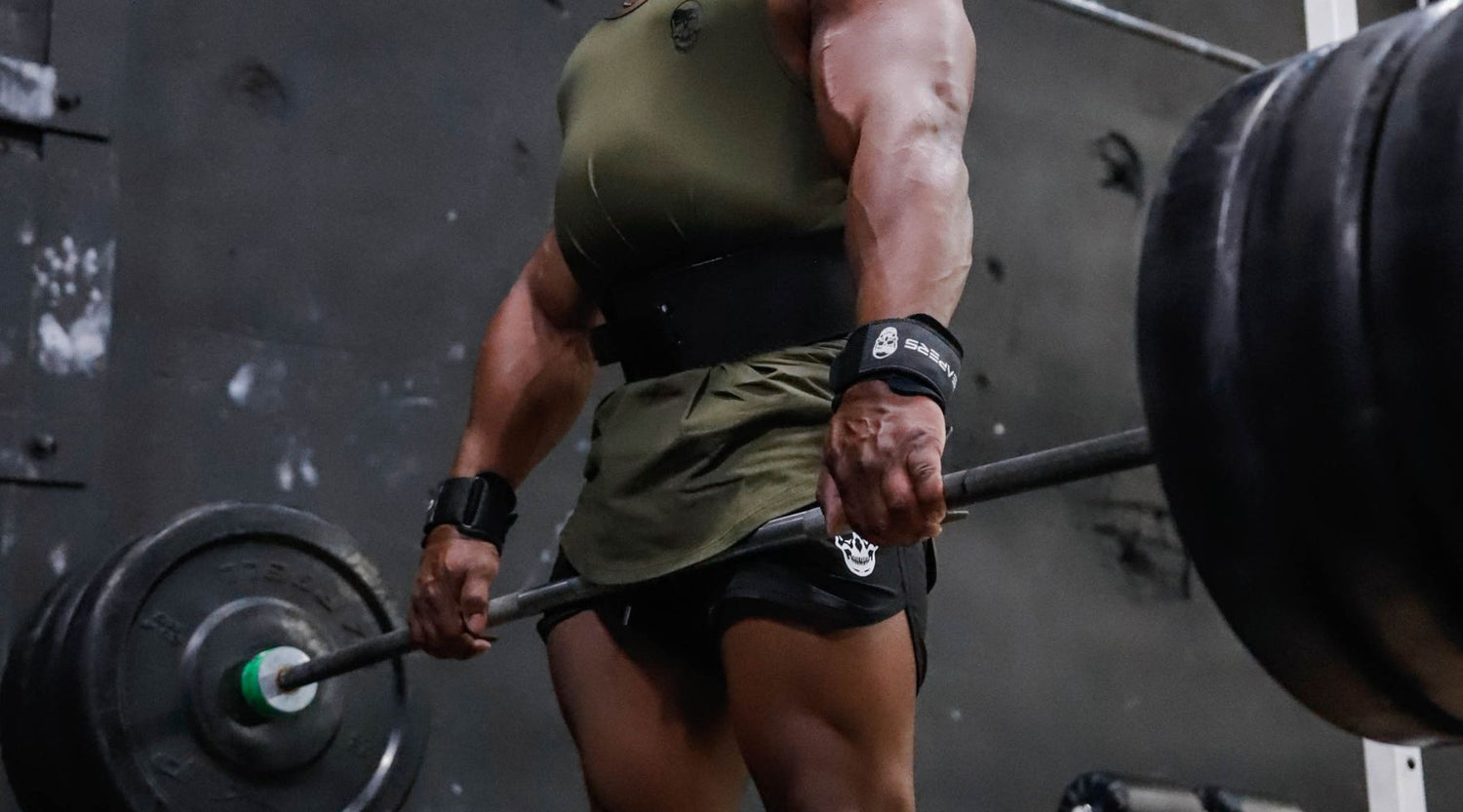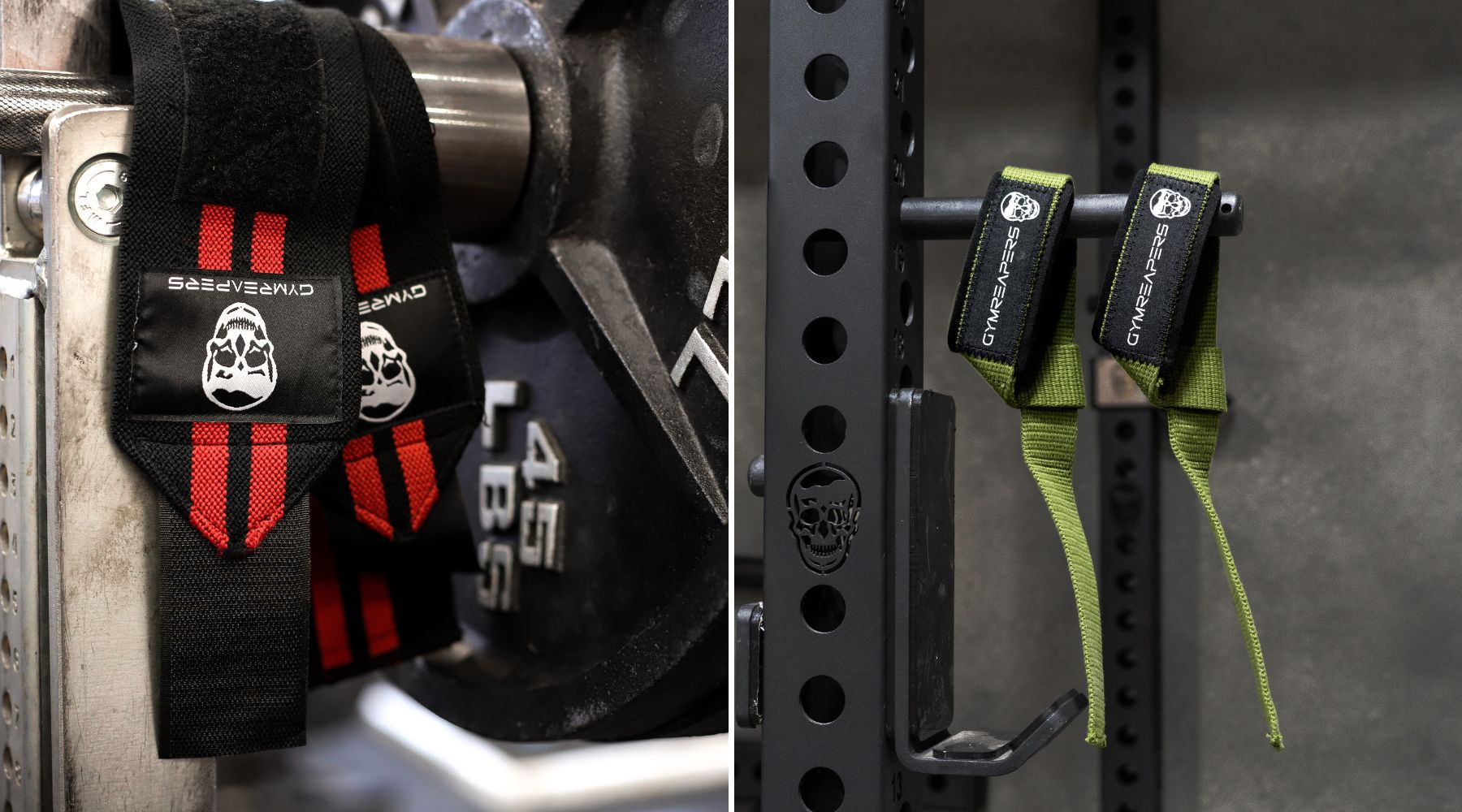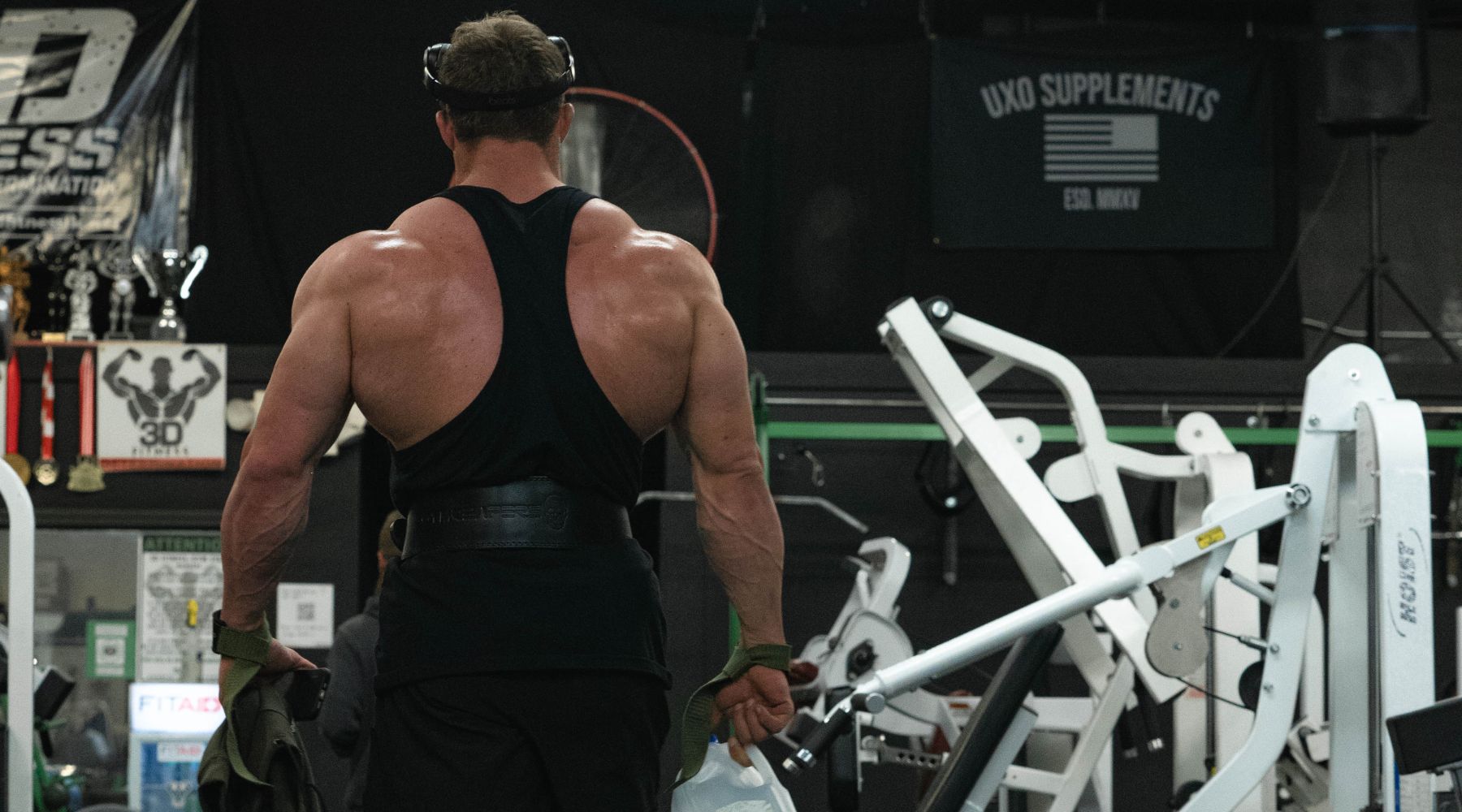One question I get from my clients is if they should use a lifting belt.
Many of them are interested in wearing one because they are eager to lift more weight and wonder exactly how much a belt can help.
A lifting belt can be a helpful tool for serious trainees looking to get stronger. Wearing a belt correctly improves intra-abdominal pressure, translating to a more rigid torso, greater confidence with heavy loads, and the ability to lift 10-15 percent more weight on compound exercises.
Still, there is more to wearing a belt than meets the eye. Knowing how and when to wear a lifting belt is necessary to get the most out of it and stay safe during training.
Key Takeaways
- A lifting belt reliably improves training performance on various compound movements (squats, deadlifts, etc.), and its effects appear to be most pronounced when lifting at least 80 percent of 1RM.
- A lifting belt can be valuable for people interested in power and explosiveness training because it can improve bar speed, especially toward the end of a set.
- Despite the benefits, a lifting belt carries some drawbacks, and you must know when and how to use it. Otherwise, a belt could get in the way more than it helps.
How Much More Can You Lift With A Lifting Belt?

It’s difficult to say precisely how much a lifting belt can help, but it appears to be a 10 to 15 percent increase on some compound exercises.
The exact improvement depends on the trainee’s ability to use a belt and what movement they wear it for.
For instance, if your current 1RM on the deadlift without a belt is 300 lbs, you could potentially lift 330 to 345 lbs with one.
If lifting as much weight as possible isn’t your thing, you can also use a belt to do more reps with the same load, lift the same weight for the same number of reps with less effort, or lift the same weight more quickly.
Most of the data is for barbell squats, with researchers primarily looking at EMG activity, intra-abdominal pressure (IAP), and repetition speed.
For instance, in one paper, researchers examined the effects of beltless and belted training during squats with 70, 80, and 90 percent of 1RM. According to their findings, maximum IAP values were up to 40 percent higher when wearing a belt.
The most significant differences were observed in the 90 percent of 1RM condition, which makes sense and hints at the idea that wearing a belt becomes increasingly beneficial as we get closer to our max.
How a Lifting Belt Influences Rep Speed
Given the tight correlation between rep speed and the percentage of 1RM, it’s not a stretch to assume that being able to do quicker reps would also mean having the capacity to add more load to the bar.
In one study, researchers examined the effects of wearing a belt during squats, focusing on rep speed and explosiveness. According to their data, the five subjects completed their reps quicker when wearing a belt. The difference in speed became more noticeable toward the final reps on each set (3.34 versus 3.56 seconds).
Additionally, a weight belt increased IAP by 25 to 40 percent, which aligns with the findings of the previous paper.
In case you’re worried about speed, and how it could impact your form, the following study should be of some comfort. In it, the subjects were instructed to do reps of back squats at a self-selected speed with 90 percent of their 1RM. The participants trained with and without a belt.
The activity of several muscle groups was measured using surface electrodes, and each participant was videotaped.
Subjects completed their sets significantly quicker with a belt, and bar velocity was higher in the downward and upward phases. Muscle activation didn’t differ significantly between the conditions, suggesting that a belt could improve explosiveness without affecting technique or range of motion.
Before We Move On
That said, you can find examples of people lifting impressive weights without a belt. One such is Pete Rubish squatting 500 lbs for 15 reps with no belt or knee wraps.
Still, almost everyone will be able to lift more weight with a belt, and if you compete in powerlifting (or aspire to), there is no reason why you would purposefully do only beltless training.
The Science Behind Lifting Belts Explained

The advantages of wearing a lifting belt mostly come from its ability to improve intra-abdominal pressure. A belt wraps around your midsection tightly enough to apply a compressive force, resulting in a higher IAP and a more stable torso position.
Maintaining a rigid torso gets easier, and you can more efficiently apply force to external weights. As a result, you experience the benefits of lifting more weight, doing more reps, exerting less effort for the same amount of work, etc.
“When we get under a heavy barbell, we need to take a big breath and brace our trunk muscles so that the weight on the bar does not bend us in two. This action of breathing and bracing of the core amplifies the pressure inside our abdominal cavity and creates tremendous stability.”
Thanks to the compressive force, a lifting belt stabilizes the spine and keeps it in position for the duration of each set. Smaller degrees of flexion and extension lead to less spinal stress and potentially lower injury risk.
Speaking of spine health, some EMG data suggests that a lifting belt can improve erector spinae activation. The data applies to squats, but that may be the case for other compound lifts.
As their name suggests, the spinal erectors straighten the back, and superior activation could further contribute to a rigid torso and a stable spine.
Because of these effects, a lifting belt can provide a psychological advantage, allowing trainees to lift heavier weights, do more reps, and provide a stronger training stimulus that can result in greater long-term adaptations.
When Would A Lifting Belt Help?

1. On Compound Movements
A lifting belt can be a valuable tool when performing compound lifts, such as the squat (and variations), bench press, deadlift, clean and jerk, overhead press, hip thrust, etc.
With that said, a belt won’t be as helpful for every exercise and might even get in the way during some activities. Anecdotally, trainees find a lifting belt to be the perfect addition for squats and overhead presses, but it could be tricky to use during deadlifts and other hip hinge movements.
Experiment to see where a belt helps and where it might get in the way. We will talk about proper belt use shortly.
2. At a Higher Percentage of 1RM
The primary reason for using a lifting belt would be to improve your performance on your heavier sets. Even research suggests that the benefits become more pronounced at 90 percent of 1RM.
To avoid turning the belt into a crutch, set clear rules for when to use it and avoid putting it on for lighter sets. For instance, you can start using your belt when lifting at least 75-80 percent of your 1RM and doing sets of 2 to 6 reps.
3. When You Have The Necessary Skill
The third scenario where a lifting belt could help is when the trainee has the skill to use it correctly.
A common mistake trainees make is tightening the belt as much as possible. Doing so prevents them from taking deep breaths, which limits intra-abdominal pressure, causes bruising, and hinders performance.
When Would A Lifting Belt Not Help?
1. On Movements Where It Doesn’t Matter
A lifting belt is unnecessary for assistance and isolation exercises: bicep curls, tricep extensions, lateral raises, lat pulldowns, etc.
You also don’t need a belt for every multi-joint exercise. For instance, pull-ups are a compound movement but wearing a lifting belt wouldn’t provide any performance or safety benefits.
2. When Lifting Light Weights
You don’t need a lifting belt when using lighter weights on compound activities. In fact, I recommend only using a belt when lifting 75-80+ percent of your 1RM to avoid turning it into a crutch.
3. When You Lack The Necessary Skills
Just as a belt works for skilled lifters, it can get in the way for those lacking the experience to use it correctly. Trainees who don’t know how to brace and breathe correctly should prioritize that before ever putting a lifting belt on.
We will discuss proper belt use in the next point.
- Related Article: Is Using a Lifting Belt Cheating? No, Here's Why
How To Breathe & Brace Properly With A Lifting Belt

Begin by placing the lifting belt around your waist and experiment to see what position feels most comfortable and supportive. Some trainees prefer to wrap the belt at belly button level, but that position could mean the belt gets in the way and limits your range of motion on some exercises, such as deadlifts.
A higher belt position (e.g., just above the belly button) could be more advantageous because it wouldn’t get in the way as much and might even help you brace better.
Once you’ve found your ideal position, tighten the belt and lock it in place. The belt should fit snugly around your midsection but not to the point where it obstructs your breathing. Ideally, you should be able to take a deep breath, pushing your stomach against the belt.
Once you’ve done that, you’re ready to initiate the set. Grab the bar and set yourself in position, ready to begin. Take a deep mouth breath into your belly, pushing it outward against the belt, and contract your abs as if someone is going to punch you in the gut.
Perform the repetition while maintaining the rigid position and exhale forcefully just as you complete the rep. Take another deep breath and initiate the next rep.
The belt should stay in position for the duration of the set. If you feel that it moves up and down, or there is a gap between the belt and your body at some point, it’s probably too loose.
Related Article: Why Do People Wear Lifting Belts?
Do Different Types Of Belts Help You Lift More Than Others?

How much use you get from a lifting belt depends on several factors, including your body fat percentage, torso length, and training style.
For most people doing traditional weight training, a 4” wide, 10 mm thick lifting belt, such as this one, will provide excellent support. These belts break in relatively quickly and wrap around your midsection tightly enough to improve IAP and stabilize your spine.
If you’re a heavier lifter with some midsection cushion, a 13 mm lifting belt, such as this, could offer even more support. How big of a difference that would make is hard to say. It’s best to experiment and see what feels more comfortable for you.
It is worth noting that 13 mm belts are more rigid, take longer to break in, and could feel uncomfortable for leaner trainees who don’t have as much midsection padding. Don’t automatically assume that the thicker it is, the more it will help.
Next up, we have the belt width. Most belts on the market are 4” wide, which offers all the support you will need from a lifting belt. Just make sure to get a belt that is the same width all around. Some models are 4” wide at the back, but thinner at the front, and therefore not as supportive.
A 3” wide belt could be better in rare cases where the trainee mostly uses it for deadlifts or has a shorter torso. For example, if you’re shorter than 5’8” or 5’9” (172 to 175 cm), you might want to look into a 3” wide belt.
One inch less means the belt covers a smaller percentage of your midsection and is less likely to dig into your flesh when there is some degree of torso flexion.
Finally, we have to mention training style. So far, most of what we’ve discussed applies to regular lifters who prefer doing compound lifts: squats, deadlifts, etc. If you enjoy a more dynamic training style, such as Olympic weightlifting, CrossFit, or Strongman, a softer belt might be of more use.
A hybrid lifting belt with a Velcro hook and loop strap could provide enough midsection support without getting in the way or feeling bulky.













Leave a comment
All comments are moderated before being published.
This site is protected by hCaptcha and the hCaptcha Privacy Policy and Terms of Service apply.